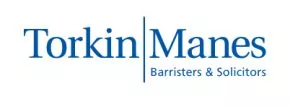"Fast justice" may not always amount to good justice.
In 2014, the Supreme Court of Canada's decision Hyrniak v. Mauldin 2014 sec 7, ushered in a new age of civil litigation by enshrining summary judgment as a tool for courts to resolve parties' disputes in the most efficient way possible.
Hryniak's noble ambitions notwithstanding, some cases remain ill-suited for summary judgment. A recent decision of the Ontario Court of Appeal, Royal Bank of Canada v. 164397 Ontario Inc. 2021 ONCA 98, illustrates that summary judgment on a paper record alone is a particularly limited tool - especially where there are credibility issues requiring the court's fact-finding powers.
A guaranteed problem
Royal Bank of Canada v. 164397 involved personal guarantees the individual appellants had provided as security for a large loan to the family business that was made by the respondent bank. The appellants were the directors and shareholders of the company running the business.
Upon the business' failure, the bank brought an action against the appellants on, amongst other things, their personal guarantees. The appellants counterclaimed, alleging that the bank had improvidently realized on the business' assets.
Examinations for discovery were held and both parties brought motions for summary judgment. The bank filed an affidavit of its loan manager in support of its summary judgment motion; the individual appellants also swore affidavits. Critically, no cross-examinations on the affidavits were held by any of the parties, but they did rely on the discovery transcripts.
One of the main issues of the summary judgment motion was the extent of the appellants' liability under their guarantees.
The appellants argued that their collective exposure under the guarantees was limited to a total of $600,000. The bank argued that each appellant's exposure under the guarantees was $600,000. The appellants countered that the bank misrepresented the scope of their liability under the guarantees.
On the motion for summary judgment, the motion judge held that there were no issues for trial in respect of the validity and enforceability of the guarantees. The motion judge also rejected the appellants' allegations of misrepresentation by the bank and ultimately held the appellants liable under their personal guarantees for a total amount of $1,500,000, plus interest.
The Court of Appeal reversed. It held that while there was no issue requiring a trial with respect to the validity and enforceability of the guarantees, the motion judge erred in not ordering a trial or using her fact-finding powers under the summary judgment rule to resolve the appellant's allegations of misrepresentation.
Why paper-record summary judgment is limited
The Court of Appeal began its analysis by invoking the usual principles regarding summary judgment.
Under Hyrniak, summary judgment involves a two-part analysis:
- First, the motion judge must determine if there is a genuine issue requiring a trial based only on the evidence before her, without using any additional fact-finding powers under Ontario's summary judgment rule;
- Second, if there appear to be genuine issues requiring a trial, the motion judge must then decide if a full trial can be avoided by using her fact-finding powers under the summary judgment rule. The powers include the ability to weigh evidence, evaluate a witness' credibility and draw reasonable inferences from the evidence. The court can also require oral evidence to be tendered by the parties.
The court noted that this "analytical framework" should be applied in all cases involving a summary judgment motion. If the framework is not applied, the motion judge "runs the risk that, in an effort to dispose of a case in a summary fashion, motion judges will not properly analyze the evidence ... . "
Here, the court noted that the motion judge fell into error by engaging a "sole brief self-direction about the applicable analytical framework" under Hyrniak. A more fulsome analysis was required.
Moreover, according to the Court of Appeal, the motion judge did not explain why she rejected the appellants' unchallenged evidence that could support their allegations of misrepresentation by the bank.
The court observed that this error was particularly glaring because of "the absence of any evidence to the contrary by the [bank]." The bank had filed no other evidence but the guarantees themselves and the evidence of the bank loan manager. Nor did the bank cross-examine the appellants on their affidavits as to their understanding regarding their liability under the guarantees.
Before rejecting the appellants' evidence on this contested point, the motion judge ought to have weighed the evidence, evaluated it, or made findings of credibility. As the court held, the motion judge "could not simply prefer one position over another without providing an explanation that is sufficient for appellate review."
The motion judge should have tried to determine if it were possible to assess the parties' credibility solely on the written record: if not, she was required to consider oral evidence on the summary judgment motion or order the trial of an issue.
Summary judgment is not always the answer
Royal Bank of Canada v. 164397 teaches some important lessons about the litigation culture shift and the practicality of using summary judgment as a default procedure for resolving disputes. Where the credibility of witnesses is at issue or there is a serious factual dispute, the principle of access to justice necessarily yields to trial fairness.
Summary judgment based solely on a written record has its limits. While it may very well be an efficient and fast procedure, it may not be the best one.
There are circumstances where a court has no choice but to hear from witnesses, evaluate their oral evidence and try to resolve disputes either by employing the enhanced fact-finding powers under the summary judgment rule or by forcing the matter onto trial.
Summary judgment is an excellent tool for promoting litigation efficiency - but it is not a panacea. There are cases where a written record is simply not enough.
Originally published by The Lawyer's Daily
The content of this article is intended to provide a general guide to the subject matter. Specialist advice should be sought about your specific circumstances.

